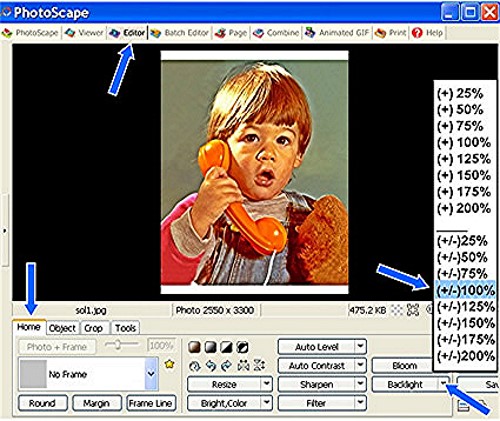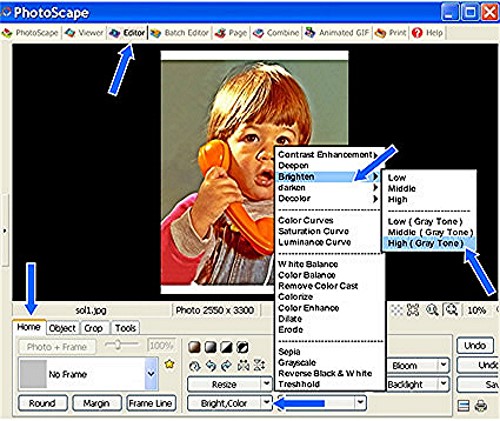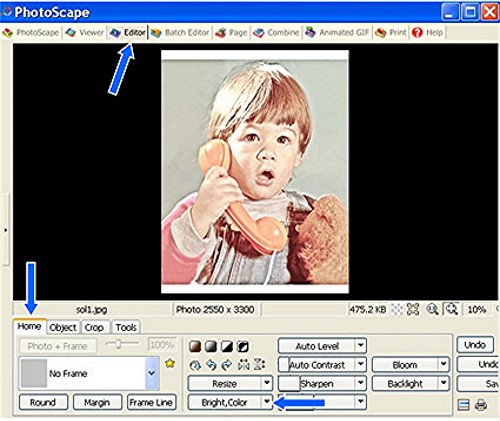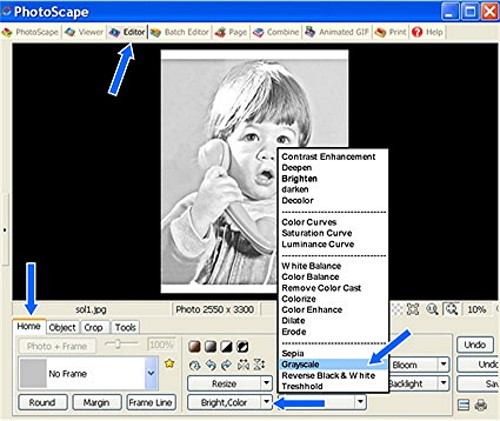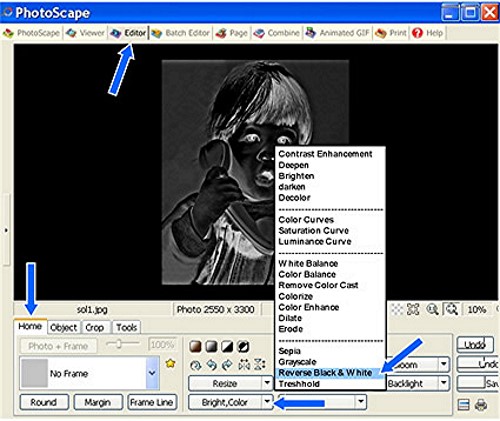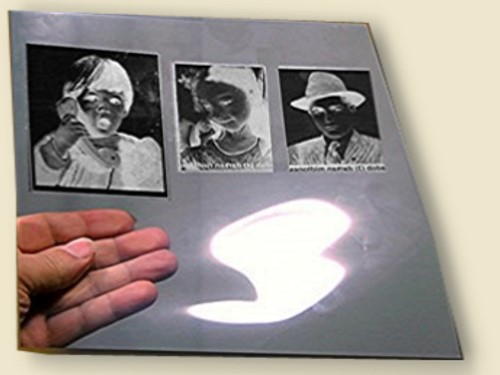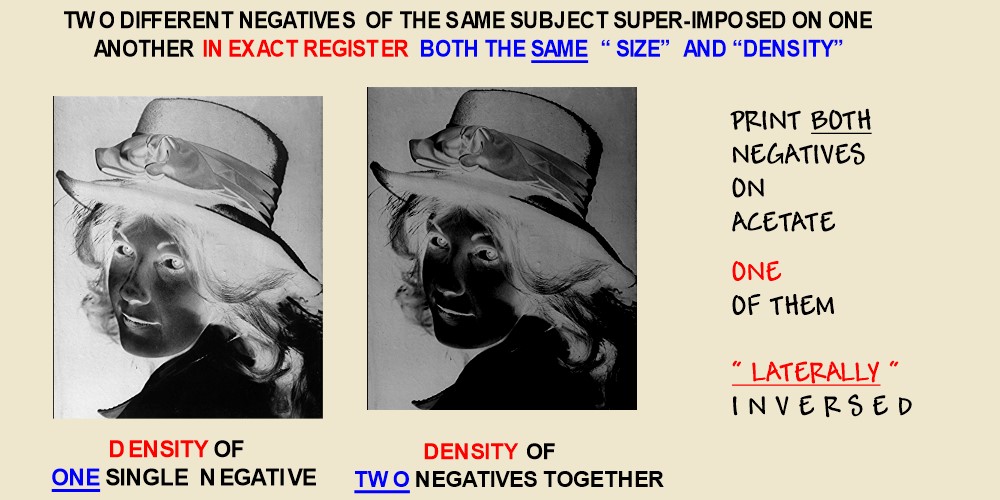CHAPTER 13
HOW TO MAKE DIGITAL NEGATIVES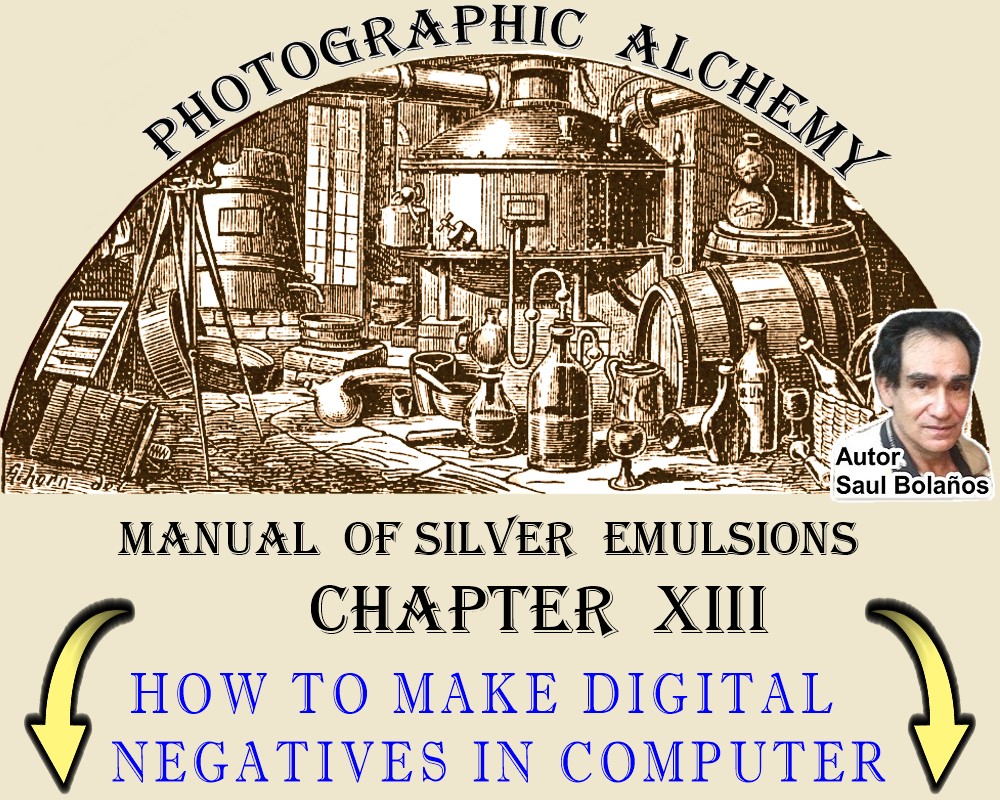
HOW TO MAKE DIGITAL NEGATIVES FOR CONTACT PRINTING
for making photographic pictures by contact ON FLAT SURFACES like paper and wood: Use silver silver chloride emulsion; its formulas have been given in this book. That liquid light sensitive silver emulsion is of a slow contact speed with the advantage that no darkroom is needed to work it. however, to make pictures you need a negative. This page will tell you how to make it.
ABOUT THE AUTHOR. Saul Bolaños
Has conducted independent research most of his life on applied Visual Art and Science. He is an Authority in Liquid Silver Emulsion Chemistry. An Artist and Inventor of Several Novel Printing Processes, among them Silver Halide Coffee Art. On this page:
1. - how to make excellent digital negatives to contact print on my silver emulsions homemade papers and for all known alternative photography processes.
2. - how to make a contact printer. I tested more than 20 photo editing programs (some very expensive) and the best I found is "photoScape" which is totally free with no adware. you can download this program for free, just search for "Photoscape". after many trials I found how to use its excellent features in order to make good dense black and white negatives with a long scale from color digital positives taken in the camera or any other color digital file as well as from scanned black & white silver negatives on celluloid or black & white silver positives on paper.
all computer monitor screens without exceptions are deceptive, they show great density on the negatives being displayed, but this density is false, on printing; the negative will have very poor density resulting in prints of very low contrast. follow directions below and your problems for making negatives for all alternative processes are solved.
these Directions were worked out for making great negatives for printing on My silver based PHOTOGRAPHIC EMULSIONS with only a few variations in parameters of steps given below.
negative density can be adjusted for any photographic printing process like: "bromoil, kallitype, cyanotypes or blue print process, carbon process, platinotype, palladiotype, albumen process, plain salted paper, carbro, gum bichromate printing, dusting on, etc. after making the adjustments as shown below, if the final to be printed negative is going to be small, say, 4x5 inches, the original file can be small from 500 to 1000 kb (0.5 to 1.0 Mb) Save it in "JPG" format , choose " maximum quality " in the options menu.
open the "DIGITAL FILE" in photoScape, work on the "EDITOR" tab above the window
and in the "HOME" tab below the screen
(signaled by the arrows)
so you will have all the options as shown below:

